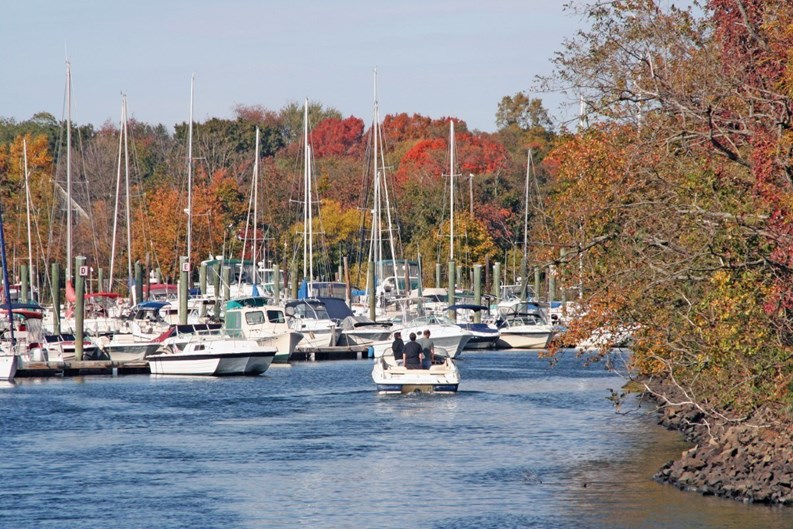Fairfield, Connecticut is an upscale suburban enclave of tiny neighborhoods, pristine beaches and big city proximity. The mix is so popular that most people, once they've settled in, want to stay put. Walter Hibbs is one of those happy campers.
“My family moved to Fairfield when I was in second grade, I’m 58 now and I’ve never wanted to live anywhere else,” said Hibbs, a realtor who manages the Fairfield office of Prudential Connecticut Real Estate.
His two adult offspring are Fairfield folks, too, leaving town for college, but moving back once they graduated and loving their hometown as much as their dad does.
“It offers the best of everything,” Hibbs noted. “We have five public beaches on Long Island Sound, tremendous shopping, restaurants, recreation and cultural attractions and a highly ranked school system. But we’re only 50 minutes from New York City on the commuter rail or by car and just three hours to Vermont skiing.”
Along the “Gold Coast”
Located in Fairfield County, this affluent community along Connecticut’s affluent “Gold Coast” is composed of many neighborhoods, with two in particular – Greenfield Hill and Southport – well-known for their wealth, expansive properties and large, lovely homes.
Money Magazine ranked Fairfield as the “ninth best place to live in the United States” and the best place to live in the Northeast in July 2006. Connecticut Magazine gave the town its top billing in 2009. Its affluence affected its ranking, as did the low crime rate, scenic location, excellent schools and proximity to Manhattan. The corporate headquarters of General Electric and Bigelow Tea are located here.
Adding to its chic allure, The Official Preppy Handbook, a 1980s tongue-in-cheek bestseller, dubbed Fairfield one of the preppiest places in the United States.
In the 2000 census, Fairfield’s population was 57,340, with 95 percent white and the remainder made up of African Americans, Latinos, Asians, American Indians and Pacific Islanders.
“It is becoming more diverse as the years go by,” said Hibbs.
The median family income is $138,000. The town government consists of the three-member Board of Selectmen, a New England-style traditional Representative Town Meeting (RTM) and many other politically-appointed commissions, boards and committees. The First Selectman is Democrat Kenneth A. Flatto, who is currently serving his fifth term in office.
Fairfield’s history dates back to 1639, when Connecticut was established as a self-ruled colony, separate from Massachusetts Bay Colony, to which it had belonged. Roger Ludlow, framer of the Fundamental Orders, the regulations governing the new settlement, purchased the land now known as Fairfield and bestowed its name.
Town Burned to Ground
Like others in the northeast colonies, Fairfield’s citizens were swept up in the Revolutionary War. But these patriots, who lived in a pocket of Tory support, suffered for their commitment to the cause for independence with regular raids on their coastline from British-controlled Long Island, across the sound. And on July 7-8, 1779, the town was burned to the ground by 2,000 British troops, who had stormed Fairfield Beach in an attack staged as punishment for the Fairfielders’ patriotic commitment.
The destruction was still visible 10 years later, as President George Washington noted in his diary, when he visited the area and saw burnt-out homes and solitary chimneys still standing as reminders of the onslaught.
After the war, Fairfield settled into its role as an agrarian community for over a century. That ended during World War I, when neighboring Bridgeport became the center of a large munitions industry that triggered an economic boom. Prosperity created a housing shortage in the city and wealthy workers looked to Fairfield as the locale to build new homes. Trolley lines and the automobile made Fairfield more accessible and desirable. And growth continued, even during the Depression.
Today, Fairfield, covering 31.3 square miles, is comprised of many well-established neighborhoods including Sasco, Fairfield Center, Southport, Tunxis Hill and Stratfield. The wealthy Greenfield Hill section is famous for its expanse of dogwood trees, celebrated with a springtime Dogwood Festival and causing Fairfield to dub itself “dogwood capital of the world.”
Housing Quite Varied
Housing today runs the gamut from one-bedroom condominiums selling for $152,000 to $14 million mansions near the water in Southport, said Hibbs.
“Fairfield is not dominated by condos, but we close on average about 80 a year,” he said.
They range from small units in converted apartment complexes to larger 3,000 to 3,500-square-foot townhouse-style condos with two to three bedrooms and three to four baths, selling for $975,000.
“The demand fluctuates, and often we will see people downsizing from their two to three million dollar homes into a condo. But the big problem for them is selling that larger home to move into a condo,” he said.
People who live in Fairfield want to stay here, concurred Linda Matthews, executive assistant at the Fairfield Chamber of Commerce.
“It is a special place, with great historic flair and wonderful access to the arts and culture, both at our Fairfield and Sacred Heart universities and at our many museums and galleries. Shopping and restaurants provide everything our residents need, but we are only a short drive or train ride into New York,” she said.
Recreation abounds on its five miles of Long Island Sound beaches, staffed by lifeguards in the summer. Residents also enjoy boating from two in-town marinas and hiking around Lake Mohegan and at two bird sanctuaries.
Many notables have called Fairfield home, including the late composer and conductor Leonard Bernstein and actors Meg Ryan, Justin Long, Keir Dullea, Hume Cronyn and Paul Hogan. Radio personality Don Imus, the late actor Jason Robards and Jack Welch, former CEO of GE, had homes in nearby Southport, for many years. Grammy award winner John Mayer and professional tennis player James Blake both grew up in Fairfield and went to high school in the town.
“People who live in Fairfield rarely want to leave,” said Matthews. And to that, Hibbs agrees. “Fairfield’s amenities are many and it’s the only place I’ve ever wanted to live,” he concluded.
Nancye Tuttle is a freelance author and a frequent contributor to New England Condominium magazine.







Comments
Leave a Comment